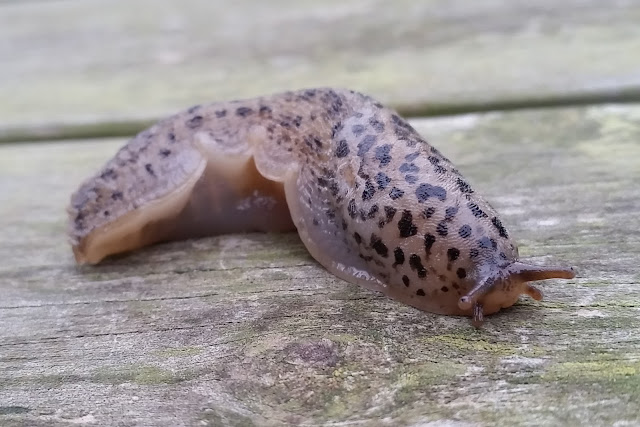The Dungeness Peninsular in November can be a bitterly cold
place to go birding but as we drove down in the driving drizzle this morning
the temperature was reading 16c at 0900 and although the wind was howling from
the south-west and waves of wet were pulsing through, it was anything but wintery.
As we arrived at the ARC it let up enough for our party to
head for the Hanson Hide before it closed in for the next hour. ‘Dear BBC
Weather.... your live radar weather feed
clearly showed that we were under some cloud but out of the rain which was now
in France. Unless we too were also now in France this was clearly not the
case....’
 |
| This little Kestrel was sheltering in the car park |
Anyway, it was an entertaining respite with a fine Great
White Egret dropping in and a Bittern performed very nicely along the reed edge
(actually our second bird as I saw one from the car just before we arrived)
before performing a windblown circuit. Three female Goldeneye were with the
dabblers that included three cracking male Pintail and silvery white Great
Crested Grebes loafed about. Several Marsh Harriers made regular circuits and
included an almost completely dark juvenile bird.
 |
| Murky |
 |
| Dark Marsh Harrier |
 |
| Incoming Great White |
 |
| Legs apart - bracing against the wind! |
The willows just outside were in the lee of the wind and
were full of active Chiffchaffs, Goldcrests and Blue Tits while Cetti’s
Warblers chattered away.
With the curtain of rain seemingly past we headed for the
beach only to meet the next wave which thankfully soon moved through. We diligently
checked all the gulls resting on the shingle but there was not a trace of a
single Caspian Gull although the Great Black-backs were truly imposing. With a
bit of shelter from the wind we were able to hear finches and up above hundreds
of birds were on the move. They mostly seemed to be Goldfinches and Linnets but
there were definitely a fair few Siskin amongst them and I heard Chaffinches
and Greenfinches and at least one Brambling. They seemed to be re-orientating
over the point and circling round before heading south-west. I am not sure if
they were attempting to move across the Channel or simply coasting.
Out to see there were a few Gannets and Kittiwakes heading
west along with a couple of Guillemots and a Razorbill and one distant Fulmar.
Great Crested Grebes and Cormorants were scattered across the vista and a fine
pale phase adult Pomarine Skua powered its way past. Two small flocks of grunting Brent Geese did likewise.
 |
| Not sure is beach casting is a legal way of catching wildfowling? |
With no new gulls and
lunch beckoning we made our way back to the RSPB reserve passing a solitary
Tree Sparrow on the feeders on the way in. Lunch outside on the benches was pleasant
and positively balmy and set us up for our circuit of the trail.
Burrows Pit yielded two red-head Goosander but there was no
sign of the two Smew and a flock of very smart male Pintail upended in the
shallows. The trees were chock full of Cormorants in all plumage states. A much
underrated bird.
Goldcrests called from the Sallows and a Raven found its way
onto the list in the usual Denge Marsh area along with our second and third
Great White Egrets and at least six different Marsh Harriers. We were at the big bend before the Hookers
Pit view point when I heard some Long-tailed Tits and a Firecrest call. I
stopped the group and immediately heard a squelchy tecking from the brambles in
front. My very first thought was Lesser Whitethroat but then up pops a calling
Dusky Warbler right in my view. I called it immediately and it flew to the
sallows behind. Over the next hour it called on an off and we had glimpses of
it several times but needless to say it was staying low in the strong winds.
As
the light fell we decided to leave it be and continue on the trail feeling the
warm glow of a very good self found bird. There was nothing with the large Greylag flock
from the viewpoint and a very impressive Leopard Slug was the highlight!
 |
| Leopard Slug - what a beast! |
With a little light left we drove back to the ARC (passing another
Great White on the way) and spent a wondrous last hour (till after the
non-existent sundown) watching at least five Great White and eight Little Egrets
fly into roost along with another Bittern flyby, weed-dancing Grebes, Kingfisher,
Water Rail and an acrobatic female Merlin to round off an unexpectedly
excellent day out.





Busy day! Some nice birds seen too :-)
ReplyDelete